The Long & Winding Road to Women’s Rights
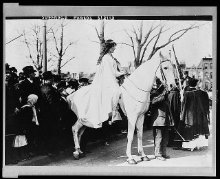
The March 3, 1913 suffrage march in Washington, DC
Updated February, 2025
As Women’s History Month returns in March, 2025, students can celebrate the ratification of the 19th Amendment in 1920. They can also look back to the preceding struggle, including the march by thousands of suffragists down Pennsylvania Avenue on March 3, 1913 (24 photos). Many of the 500,000 spectators were not supportive of the nonviolent protest, injuring 200 marchers and sending 100 of them to the hospital.
During March 2013 thousands gathered in Washington, DC to commemorate those marchers who took the struggle for women’s right to vote from the states to the federal government, rallying for a constitutional amendment.
Winning the Right to Vote
For a succinct treatment of the suffrage struggle with options for student research as well as an infographic (at left) showing the states which voted to allow women to vote before the 19th Amendment, see iCivics here and here. Sign up for free iCivics teacher access here.
The History Channel outlines the pre-1920 efforts of women’s organizations including Alice Paul and the other suffragists who picketed the White House and were imprisoned (and at times force-fed during hunger strikes) in the years following the 1913 march.
The Library of Congress provides a photo of the imprisonment of suffrage leader Lucy Burns and notes that “Burns served more jail time during her six sentences than any other suffrage prisoner, and she helped instigate hunger strikes to protest the suffragists’ treatment.” The Library of Congress also quotes another suffragist on forced feeding: “The drums of the ears seem to be bursting and there is a horrible pain in the throat and breast. The tube is pushed down twenty inches; [it] must go below the breastbone.”
News of the women’s treatment as well as changing tactics in following years helped lead to ratification of the 19th Amendment in 1920. For example,
The year 1915 marked a whole new level of activism for the suffrage movement in the U.S. Suffragist used new strategies like casting the Women’s Liberty Bell, creating the torch of Freedom, and launching a flotilla of woman suffrage boats in New York Harbor. Still, male voters in all four prominent eastern states (Massachusetts, New York, New Jersey, and Pennsylvania) rejected the idea of women having the right to vote. It is inspiring to note however, that just two years later, in 1917, New Yorkers launched yet another battle that succeeded. It was a victory that gave momentum to the national amendment just three years later.” …from the National Women’s History Alliance
The National Women’s History Alliance presents themes each year as the group recognizes women leaders. In 2024 the theme is “Women Who Advocate for Equity, Diversity and Inclusion.” The annual magazine (formerly gazette) offers biographical sketches of women leaders, an essay on settlement houses and much more. Among the NWHA’s other helpful resources are a very detailed monthly calendar of women’s history and an essay outlining the efforts to establish National Women’s History month during the 1970s and 1980s.
On August 18, 1920 Tennessee became the thirty-sixth state to vote for the 19th Amendment, reaching the required number of states for ratification. U.S. Secretary of State Bainbridge Colby proclaimed the passage of the Amendment on August 26, now celebrated as Women’s Equality Day. To see when other states ratified (as late as 1984), visit Wikipedia’s post on the the 19th Amendment. In addition, Virginia ratified the ERA in 2020. In late 2024 President Joe Biden announced that the ERA was in effect, but the Archivist of the United States said neither she nor the President could could unilaterally take the action.
 Understanding the Struggle for Women’s Suffrage
Understanding the Struggle for Women’s Suffrage
The National Women’s History Museum, which outlines the 1970’s origin and yearly Presidential proclamation of Women’s History Month here, offers Crusade for the Vote, a look at Seneca Falls, lessons (mostly targeting grades 9-12) and online exhibits.
Students can discover Key facts about women’s suffrage around the world, a century after U.S. ratified 19th Amendment from the Pew Research Center.
A 2019 NYT article, Early Feminists Issued a Declaration of Independence. Where Is It Now? by Liz Robbins and Sam Roberts, not only reviews the history around the writing of the 1848 Declaration of Sentiments, but also reveals how current historians interact.
More History Centered Resources
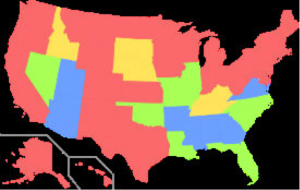
The Equal Rights Amendment failed to receive ratification by 38 states by its 1982 deadline. Click the map for details. See ERA leaders here.
Students who want to understand the place of women in military endeavors can start with Women Warriors from 3500 BC to the 20th Century, a website by Nicky Saunders. The brief descriptions Saunders has gathered by century not only give a very wide overview of women fighters but also can serve as a jumping off point for further study.
In the NYT article, The Many Roles of Women in War: Sniper, Pilot, Death Camp Guard by Navy veteran Andrea N. Goldstein, students can discover how women in and out of service, in the US and beyond, responded to WW II.
… Elsewhere, the Library of Congress hosts Women’s History Month for Teachers, with links to several federal agencies as well as an American Memory collection of primary resources. In the Census Bureau’s 2024 Women’s History Month Facts for Features students will find overall stats on employment, education, businesses, and more, including links to more detailed information. For students who want a sense of place to amplify their image of historical women in America, the National Park Service provides a website on women’s history in America as well as a detailed park-related webpage.
As of February 15, 2026 The White House no longer hosts First Ladies’ biographies. The US House of Representatives offers detailed essays on the four waves of women elected to the body and on individuals members. The US Senate includes a collection of brief biographies of the 51 women who have served in the Senate along with a timeline of women who influenced the Senate before the first women Senator entered the Senate in 1922.
A Look at Women in the Arts
To integrate the arts into literacy, visit the National Museum of Women in the Arts which opened in Washington, DC, in 1987. Among the museum’s many resources for teachers are the See for Yourself cards featuring images and general questions (including a collection of Madonnas). Also take a look at ABC – arts, books, creativity. That curriculum for fourth and fifth graders offers a series of detailed lessons, each featuring a medium, which together can result in students creating their own art books. The curriculum could be a project to plan during a break or over the summer.
To celebrate Women’s History Month, middle grades ELA teacher Kasey Short offers a list of nonfiction and fiction books representing a wide range of girl’s and women’s voices and experiences in a MiddleWeb post. She notes all students benefit from reading about smart, brave women who make positive impacts.
Women Scientists through History
Science Buddies mixes bios with experiments in Women in STEM! More than 50 Scientists and Engineers for Women’s History Month, a blog post by Amy Cowen. The article also recommends books by age. The Smithsonian Institute offers a colorful pdf for middle grades students which features women leaders in STEM.
Want more bios? AWIS links to bios of past and present racially diverse women in a wide range of science fields. For lengthier bios of select women in science, visit the Science History Institute’s Women in Science page. Although its Explore the Gallery link no longer works, NASA provides links to its women leaders as well as a brief video.
Time Magazine Recognizes 100 Women of the Year
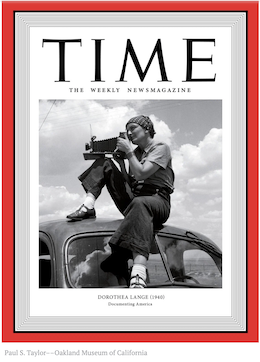
“In 1999, Man of the Year gave way to Person of the Year. While the name rightly changed, too often the choice was the same. With this 100 Women of the Year project, we’re spotlighting influential women who were often overshadowed….”
The project adds 89 women to the 11 who were named Persons of the Year in recent years. The covers capture the changing magazine designs since 1920. Online each cover is linked to a biographical essay. Readers will need to create a free Time account to access the essays. Time also describes the month long project’s background. Lilly Ledbetter, pictured below, is featured on the 2007 cover.
Women’s history on social media
To find Women’s History Month on X/Twitter, follow #wmnhist (last entry 2023), #STEMfem, and @Feministory. Students may be gleaning some history and current events ideas @teenvogue shared by the magazine which, in addition to entertainment articles, includes posts like Women in Labor History, From the Triangle Shirtwaist Fire to Today by Kim Kelly. Among Pinterest collections is one from the Smithsonian.
For a helpful general resource about women’s rights and Women’s History Month, visit the LiveYourDream.org website, sponsored by the International Soroptimist organization. For information about major legal developments affecting women, follow the U.S. Government Accountability Office’s Women and Gender in Public Policy page (still available 2/17/25).
Photo Credits
Front page: A suffragist wearing costume of “Columbia” in front of the Treasury Building, March 3, 1913, Washington, D.C, Library of Congress, LC-USZ62-70382
Inez Milholland Boissevain riding a horse during the March 3, 1913 Washington, DC, protest, Library of Congress, LC-USZ62-77359. 2016 was the centennial of her death.
24 photos: 100 Years Ago, The 1913 Women’s Suffrage Parade by Alan Taylor, The Atlantic, March 1, 2013.
Sally Ride, Photo from NASA
President Obama Signing the Lily Ledbetter Fair Pay Restoration Act in 2009. White House video.

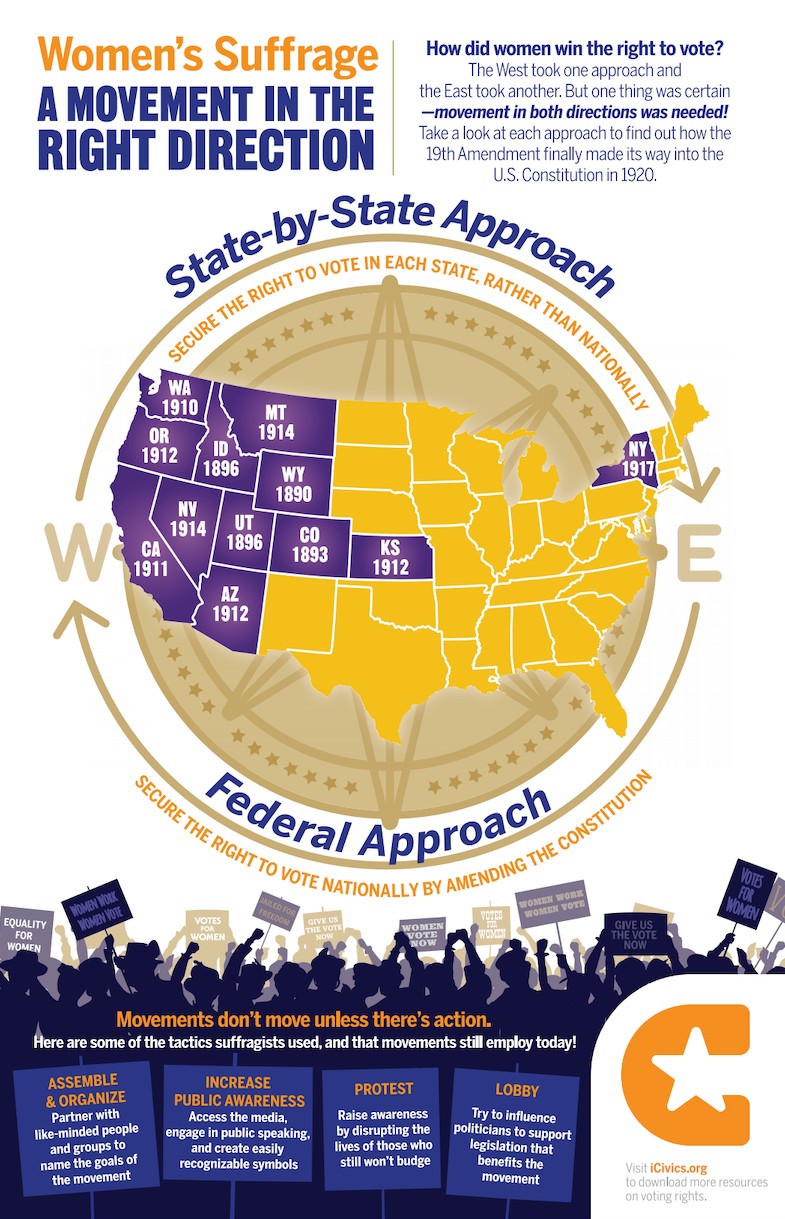
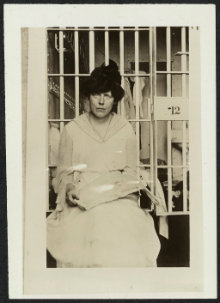
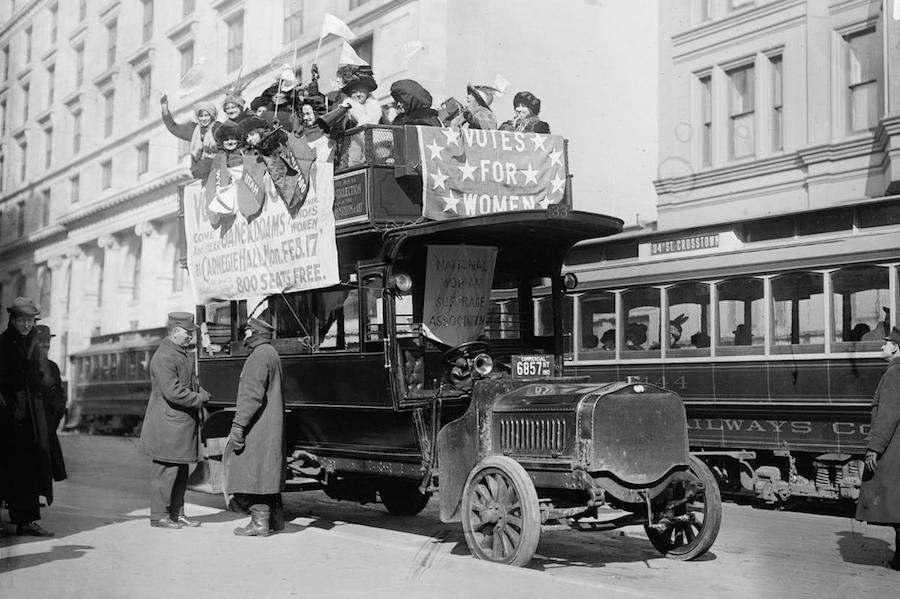

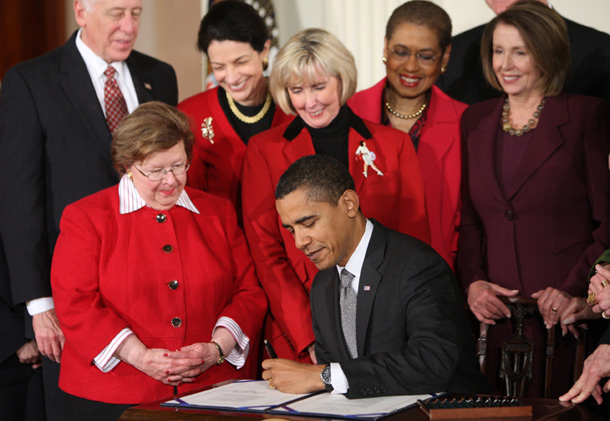



































Curated collection of women’s history primary & secondary sources, plus teaching resources, from the Library of Congress: http://primarysourcenexus.org/2013/03/primary-source-spotlight-womens-history-resources/